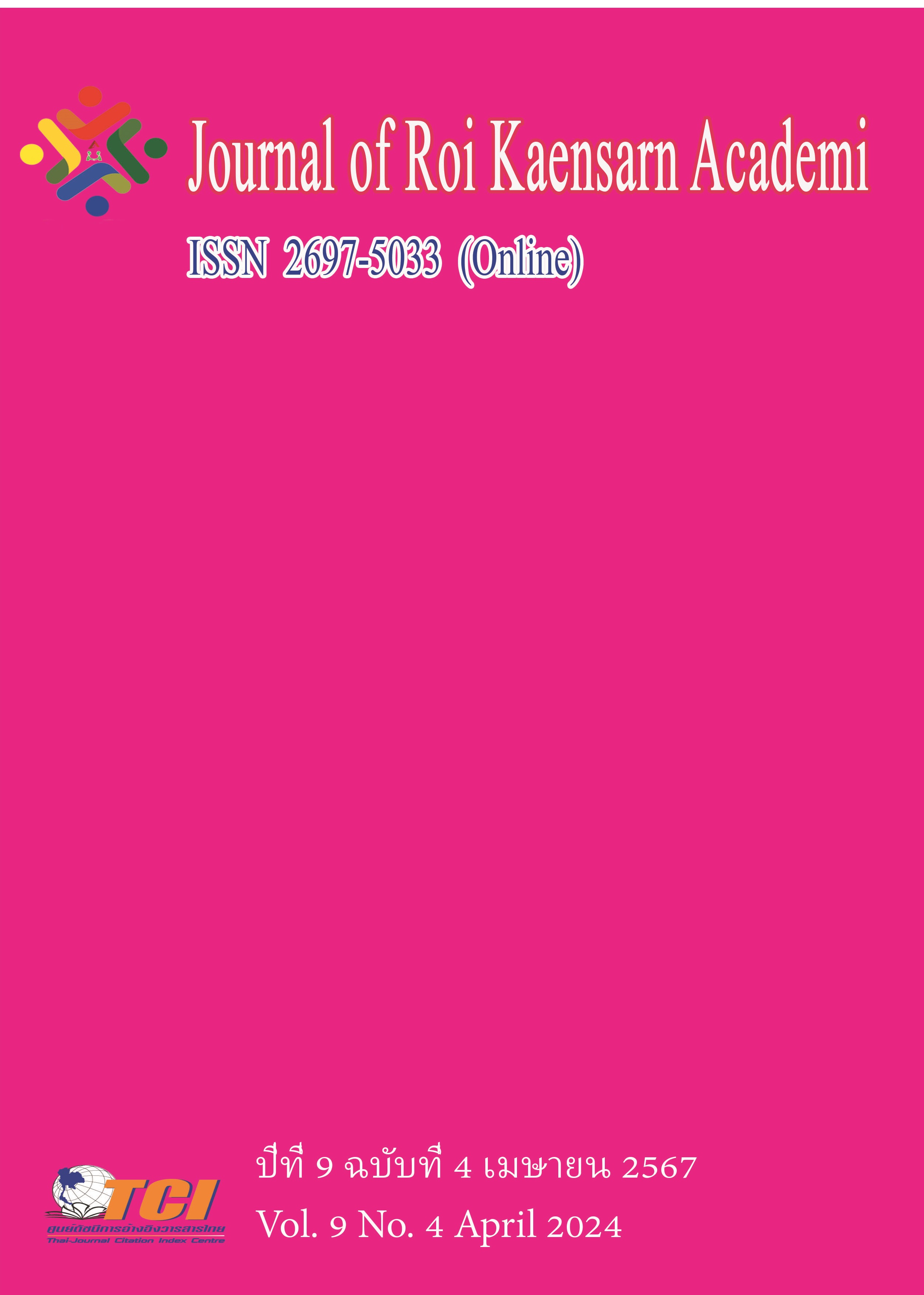A Study of Traditional Chinese Porcelain Garden Stools from the Perspective of Material Culture
Main Article Content
บทคัดย่อ
Porcelain garden stool, as an important piece of furniture in traditional Chinese life, not only carries the difference of living customs, aesthetic tastes and social classes in ancient Chinese society, but also reflects the rich material and cultural connotation. The classification of porcelain garden stool as a kind of material and the establishment of the basic structure of the material culture of porcelain pier are only the beginning of the study of material culture. Things that exist independently have no cultural significance. Only when they are placed in the dimension of "relationship" can they have significance and research value. For ceramics, porcelain garden stool is the main body of ceramic culture, and Jingdezhen is the living environment of porcelain garden stool. As the medium of research, there is a system of relations behind it, that is, the relationship between porcelain and the environment, and the relationship between porcelain and social development.
This is a qualitative research that aims to: (1)To explore the fundamental content of the material culture of porcelain garden stools. (2)To study the interaction between the natural environment and production technology in material production. (3)To analyze the connection between objects and beliefs: ceramic patterns and symbols of hierarchy. (4)To investigate material exchange as a medium for cultural transmission.
This study focuses on traditional Chinese porcelain garden stools, exploring their development, functional changes, and profound cultural significance through the lens of material culture. By conducting a comprehensive analysis of the production techniques, decorative art, social usage, and the material and cultural exchange of porcelain garden stools, particularly those from Jingdezhen, this paper aims to reveal their historical status and cultural value as an integral part of traditional Chinese culture.
The research begins with an overview of the basic content of the material culture of porcelain garden stools, including their production background, technical characteristics, and decorative styles. It emphasizes the social functions and symbolic meanings of porcelain garden stools in different historical periods. Subsequently, the article examines the relationship between porcelain garden stools and the natural environment and social development, highlighting the impact of natural resources on the production techniques of porcelain garden stools and their symbolic and communicative roles in social culture. Moreover, the study investigates the material exchange and cultural transformation of porcelain garden stools, analyzing their significance in facilitating cultural exchange and transmission both domestically and internationally.
Through case studies and empirical analysis, this research reveals that porcelain garden stools are not only representatives of traditional Chinese craftsmanship but also significant carriers of ancient Chinese social life and cultural spirit. The study of porcelain garden stools enriches our understanding of Chinese material culture and provides new perspectives and pathways for the protection and inheritance of traditional Chinese culture.
This research holds significant theoretical and practical implications for the preservation, study, and inheritance of porcelain garden stool culture, offering valuable references for the integration and development of traditional Chinese culture in modern society.
Article Details
เอกสารอ้างอิง
Chen Bei. (2019). Crossing the Boundaries of Art History: A Study of Material Culture by Professor Colerg. Art Review. (06),76-80.
Du Xiaojun. (2020). A preliminary study on the porcelain "Dun" of the Southern Song Dynasty's imperial kiln -- starting from several celadon specimens of the Southern Song Dynasty's imperial kiln. The Collector. (12),37-44.
Hu Chaohui. (2019). Secular taste and literati Temperament on 17th century blue and white porcelain: A case study of the National Museum of China. Collectors. (10),57-64.
Li Lunpeng. (2020). The Ming and qing dynasties porcelain embroidered pier study master's degree thesis, zhengzhou university). https://link.cnki.net/doi/10.27466/d.cnki.gzzdu. 2020.000256doi:10.27466/d.cnki.gzzdu.2020 . 000256.
Sun Jie. (2023). Inheritance and Innovation: In modern times, the development of jingdezhen porcelain industry transformation study (1840-1949), a master's degree thesis, university of jingdezhen ceramics). https://link.cnki.net/doi/10.27191/d.cnki.gjdtc. 2023.000075doi:10.27191/d.cnki.g JDTC. 2023.000075.
WangYao. (2017). The material culture research methodology Ph.D. Thesis, lanzhou university). https://kns.cnki.net/kcms2/article/abstract?v=9hl5eXOdJca0-2pSHAHV9n DyUqPwTbPvriBK1YCVy4nNv1eeYGsPuWgrVA8QegsO3q80L4xDLqn2NQpYHY1yfHuZ87VfTZikyTkAssg-JLmuUv5CeZDXmwgf2eI0Tscc6--eo2c9fWKUSknrvX-m7g==uniplatfor m=NZKPTlanguage=CHS
Xu Ping & Yang Lin. (2021). Development and cultural connotation of traditional seated piers. Forestry and grassland machinery (03), 54-56, doi: 10.13594 / j.carol carroll nki MCJGJX. 2021.03.011.
Wen-bo Yang. (2021). Song dynasty sit mound decoration study master's degree thesis, central south forestry university of science and technology). https://link.cnki.net/doi/10. 27662/d.cnki.gznlc.2021.000121doi:10.27662/d.cnki.gznlc 2021.000121.
Zhao Liquan. (2020). The qing dynasty to the period of the republic of China fujian and zhejiang article material culture study Ph.D. Thesis, fujian normal university). https://link.cnki.net/doi/10.27019/d.cnki.gfjsu.2020.002321doi:10.27019/d.cnki . Gfjsu. 2020.002321.

